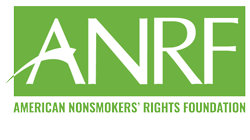Is It Safe To Burn Cigarette Filters In Fire
Skip to content Folio load link
Wildfire in many states has created chancy outdoor air quality. This is what the indoor air is still similar for millions of Americans at work due to secondhand fume, especially in hospitality venues. Breathing indoors shouldn't exist a toxic health adventure. Our very own Char Day, an ANR-F Plan Director based in Durango, Colorado, was forced to leave her home last month and head away from town to ride out the poor air quality considering of the wildfires raging in that location. "I take asthma," she says, "and this actually has made me quite sick." The fire, chosen 416, was burning 23 miles northwest of Durango and started June 1. Though rain helped dampen fires, they were not out as of Lord's day, June 17, and currently the burn is reported at 50% independent and has burned more than 54,000 acres. Costs to contain it and the Burro fire were being reported in June at $17 one thousand thousand. Char told us, "The air quality was beingness reported at 507, a level that is off the charts according to the EPA Air Quality Index (AQI)." She went on, "this is outdoor air, imagine how terrible it is to have this sort of exposure indoors."
Air Quality and Secondhand Smoke
Last Oct in Northern California the sun glowed an eerie red through the haze as wildfires acquired air quality to spike to hazardous levels—the Bay Area's highest level reported was 404 on the AQI. Poor air quality is due to the high level of fine particulate matter (PM2.five) from the wildfire smoke. Particulate matter less than 2.5 micrometers across—a pocket-sized fraction of the diameter of a human pilus–is easily inhaled and goes deeply into the lungs, causing respiratory and other health problems. Cynthia Hallett, MPH, made the same analysis last October that Char raises again: we must compare this situation of air quality from wildfires to indoor air quality in places where secondhand smoke is still present. The average level of PM2.five in establishments in New Orleans in 2014, before the smokefree casino and bar law went into effect, was 257μg/k³ at the Very Unhealthy level of air quality. The New Orleans smokefree police resulted in a dramatic improvement in air quality – and is saving lives.
Wildfires and Cigarette Butts
In the midst of Char's ordeal with wildfires, she related a small victory: a smaller fire very near her domicile was discovered and put out, only to notice out, it was probably started past a cigarette. 1 of the biggest causes of fires, exist information technology structural or a wildfire, are discarded cigarette butts. In 1997 in that location were 130,000 cigarette related fires. In 2017 this problem was still quantifiable and plush in the U.Due south., resulting in over $2 billion in costs associated with putting these fires out, and $6 billion in loss of belongings. In addition to causing fires, cigarette butts pose another chance: they are chancy to the environment. Cigarette butts leach toxins into the water and kill or hurt diverse forms of wild fauna. The plastic parts of cigarette butts can be ingested by fish, birds, whales and other marine animals and the toxicity tin can accrue up the food chain.
Good News: Smokefree Laws Can Salvage Money and Lives
The costs associated with fire containment and belongings loss, cigarette butt litter clean up, and healthcare from tobacco-related diseases, are enormous, but smokefree laws can help with this. Smokefree laws reduce the amount of toxic cigarette butt litter in our surround, alleviate risk of fires, both structural and wild, and create a good for you surround for people in places where they currently must endure breathing secondhand smoke.
Share This Story
Is It Safe To Burn Cigarette Filters In Fire,
Source: https://no-smoke.org/wildfire-air-quality-and-cigarette-butts-smokefree-laws-save-money-lives/
Posted by: petersonquilichich.blogspot.com



0 Response to "Is It Safe To Burn Cigarette Filters In Fire"
Post a Comment